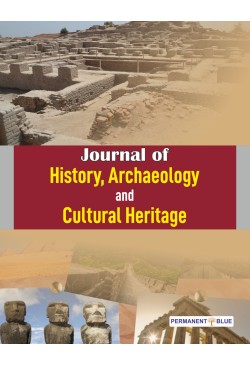
Journal of History, Archaeology and Cultural Heritage
Frequency :Bi-Annual
ISSN :3048-474X
Peer Reviewed Journal
Scholars are invited to submit original, unpublished research papers for the Journal of History, Archaeology and Cultural Heritage (JHACH), a biannual peer reviewed journal that seeks to explore the close links between the different disciplines of history, art and archaeology. Journal is focused on publishing the highest quality papers covering all aspects of South Asian Archaeology, History and Cultural Heritage. This is an effort to bring out current research and ideas together on a platform that will enhance knowledge of our past cultures. Deliberations on different aspects of the history of India and the world based on the great variety of newly emerging historical approaches, archaeological practices and emerging new trends in art and architecture can facilitate a re-evaluation of existing material by historians, archaeologists and art historians to help fill up the gaps in our knowledge through an inter-disciplinary approach. All manuscripts submitted will be subjected to rigorous review by respective referees.
Papers of below mentioned aspects/ areas along with new important discoveries and reviews of the research works will be acceptable for this journal:
• Any aspect of history of Asia,
• Any aspect of archaeology including recent explorations and excavations.
• Paleolithic: Lower/ Middle/ Upper Paleolithic Culture
• Microlithic/Mesolithic Culture
• Neolithic/ Chalcolithic/ Megalithic Culture
• Early Iron Age
• Ethnoarchaeology
• Heritage
• Historical Archaeology
• Cultural Heritage and Heritage Management